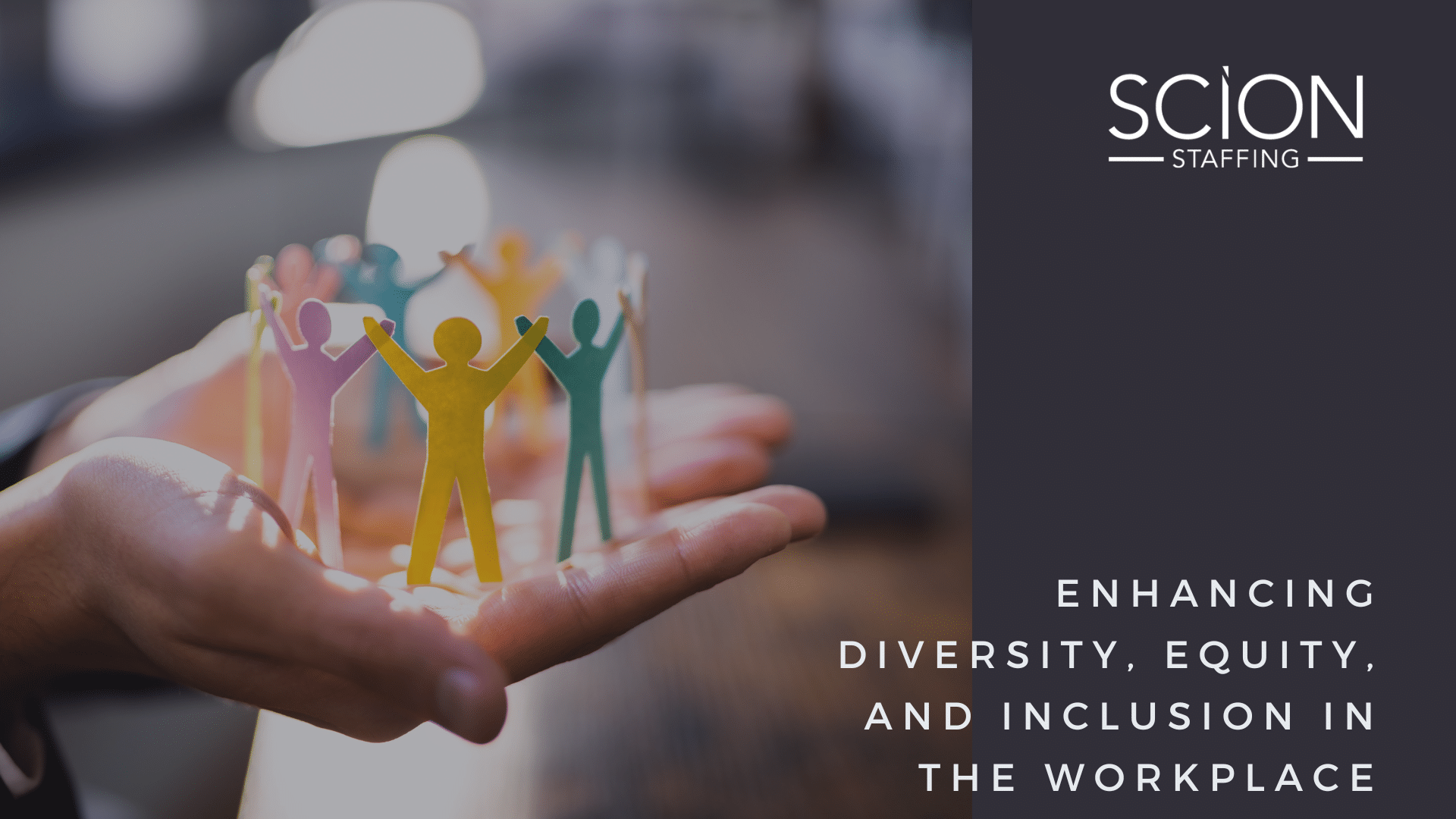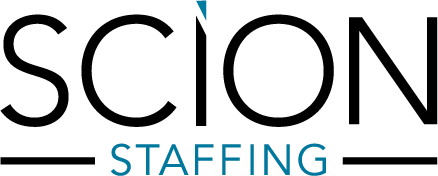
29 Jul Enhancing Diversity, Equity, and Inclusion in the Workplace
The current business landscape is undergoing a profound transformation, driven by globalization, technological advancements, and shifting societal expectations. To thrive in this dynamic environment, organizations must adapt their strategies to foster a workplace environment that values diversity, equity, and inclusion (DEI). Beyond being a moral imperative, DEI has emerged as a critical business imperative, influencing everything from innovation and employee engagement to brand reputation and bottom-line results. In this article, we will explore the multifaceted concept of DEI, examining its core components, the current landscape, and practical steps organizations can take to enhance their DEI initiatives.
What is Diversity, Equity, and Inclusion (DEI)?
Diversity, equity, and inclusion (DEI) are three interconnected concepts essential to fostering a workplace where everyone feels valued, respected, and empowered to contribute their unique perspectives. In this section, we’ll break down the definition of each of these key pillars and how they factor into the operations of many organizations.
Diversity
Diversity is a broad term that encompasses the variations in characteristics that make individuals unique. These can include:
- Demographic factors: Race, ethnicity, gender, age, sexual orientation, religion, disability, socioeconomic status, etc.
- Cognitive factors: Learning styles, problem-solving abilities, work styles, etc.
- Experiential factors: Education, work history, life experiences, etc.
- Personality factors: Values, beliefs, attitudes, etc.
A diverse workforce reflects the richness and complexity of the world around us and brings a wide range of perspectives, ideas, and skills to the table.
Equity
Equity goes beyond equal treatment to address systemic barriers and create opportunities for everyone to reach their full potential. It involves:
- Identifying and dismantling biases and prejudices.
- Providing resources and support to underrepresented groups.
- Ensuring fair access to opportunities for advancement.
- Creating a level playing field for all employees.
Inclusion
Inclusion is about creating a sense of belonging where everyone feels welcomed, respected, and valued for their contributions. It involves:
- Fostering a culture of open communication and respect.
- Creating opportunities for employees to connect and build relationships across differences.
- Ensuring that everyone’s voice is heard and valued.
- Adapting workplace practices to accommodate different needs and preferences.
The Importance of DEI in the Workplace
The business case for DEI is compelling. Research consistently demonstrates that diverse teams are more innovative, productive, and profitable. Embracing DEI from a business standpoint can lead to:
Increased Innovation
Diverse teams bring together a wide range of perspectives, leading to more creative and effective problem-solving. Studies have shown that companies with diverse teams are more likely to launch new products and services successfully.
Improved Employee Morale and Engagement
When employees feel valued, respected, and included, they are more likely to be engaged and committed to their work. High levels of employee engagement can lead to increased productivity, lower turnover, and higher customer satisfaction.
Enhanced Employer Brand
A strong DEI reputation attracts top talent and customers. Companies that are known for their commitment to DEI are more likely to be seen as ethical and socially responsible, which can positively impact their brand image and reputation.
Reduced Turnover and Absenteeism
Inclusive workplaces foster a positive work environment, leading to lower turnover rates and fewer absences. When employees feel supported and valued, they are less likely to leave the company and are more likely to be present and engaged.
Stronger Community Relationships
Companies that demonstrate a commitment to DEI can build trust and loyalty with their customers and stakeholders. By reflecting the diversity of the community, companies can better understand the needs and preferences of their customers and build stronger relationships.
Current Trends in DEI: A Complex Landscape
The DEI landscape is complex and evolving rapidly. While there is growing recognition of the importance of DEI, there are also challenges and controversies surrounding the topic.
Positive DEI Trends
- Increased awareness and understanding of DEI: More organizations are recognizing the business case for DEI and are investing in initiatives to create more inclusive workplaces.
- Growing focus on intersectionality: There is a greater understanding of how multiple identities (such as race, gender, and sexual orientation) intersect to create unique experiences of discrimination and privilege.
- Advancements in DEI measurement: Organizations are developing new metrics and tools to track progress and measure the impact of DEI initiatives.
Negative DEI Trends
- Backlash against DEI initiatives: Some individuals and organizations have criticized DEI efforts as being divisive or discriminatory.
- Misconceptions about DEI: There are still misconceptions about what DEI means and how to implement it effectively.
- Tokenism: Some organizations may engage in superficial DEI efforts without making meaningful changes to their culture or practices.
It is important to navigate this complex landscape with nuance and understanding. By focusing on data-driven approaches and engaging all stakeholders, organizations can effectively address challenges and create a more inclusive workplace.
How to Enhance DEI in Your Workplace
Creating a truly inclusive workplace demands a strategic and multifaceted approach. Effectively enhancing diversity, equity, and inclusion requires a deep understanding of organizational culture, employee experiences, and external factors. Follow these steps that provide a roadmap for organizations seeking to build a more equitable and inclusive environment.
Assess Your Current State
Conduct a thorough DEI audit to identify strengths, weaknesses, and areas for improvement. This can include analyzing employee demographics, turnover rates, employee satisfaction surveys, and other relevant data. Gather employee feedback through surveys, focus groups, and one-on-one interviews to understand their experiences and perceptions of the workplace culture. Analyze data on diversity, equity, and inclusion metrics to identify trends and patterns.
Develop a Clear DEI Strategy
Define your organization’s DEI goals and objectives in alignment with your overall business strategy. Identify key performance indicators (KPIs) to measure progress towards your diversity, equity, and inclusion goals. Do this by creating an action plan outlining specific initiatives, responsibilities, and timelines. Secure leadership commitment and support for the DEI strategy.
Foster Inclusive Leadership
Provide comprehensive DEI training for leaders at all levels to develop their cultural competence and understanding of unconscious bias. Encourage leaders to role-model inclusive behaviors and create a psychologically safe environment where employees feel comfortable sharing their perspectives. Create opportunities for leaders to develop relationships with employees from diverse backgrounds through mentorship and sponsorship programs.
Build a Diverse and Inclusive Workforce
Develop targeted recruitment strategies to attract a diverse pool of candidates. Implement fair and unbiased hiring practices to ensure that all candidates are evaluated based on their qualifications and potential. Provide mentorship and sponsorship opportunities for underrepresented employees to support their career development. Create employee resource groups (ERGs) to provide support and networking opportunities for employees from diverse backgrounds.
Create an Inclusive Workplace Environment
Foster open communication and dialogue about DEI through training, workshops, and employee engagement activities. Celebrate diversity, equity, and inclusion through events, recognition programs, and employee resource groups. Ensure that workplace policies and practices are inclusive and accommodate the needs of all employees. Provide opportunities for employees to contribute to DEI initiatives and share their ideas.
Measure and Evaluate Progress
Discover ways to track DEI metrics and KPIs regularly to assess progress towards your organizational diversity goals. Analyze this data to identify trends and areas for improvement. Share DEI progress and results with employees to build trust and transparency. Make adjustments to the DEI strategy as needed based on data and feedback.
The Role of Scion Staffing in Building Diverse and Inclusive Teams
At Scion Staffing, we understand the importance of DEI and are committed to helping our clients build strong, diverse, and successful teams. Our DEI recruiting methods focus on identifying highly talented diverse candidates and matching them with organizations that share their values.
By partnering with our team of experienced recruiting experts, you can tap into a diverse pool of talent and create a workplace that is not only inclusive but also performs at a high and successful level. We are dedicated to helping you achieve your DEI goals and create a positive impact on your organization. Contact our recruiting team today to learn more about how Scion Staffing can support your DEI initiatives.
About the Author
Patrick Chiotti (he/him) is an accomplished SEO writer and is currently the Marketing and Communications Specialist at Scion Staffing, bringing years of experience in SEO knowledge and a passion for writing to the Scion team. With additional experience in customer service roles, retail, and accounting, Patrick brings a unique set of knowledge and skills to his role while sharing the passion to continue learning about a wide range of topics so he can share his voice to a larger audience. Outside of Scion, Patrick spends his time as a football coach at the high school level and is passionate about teaching the game, while remaining a student to it. He is also a husband and father, and enjoys fitness, as well as a passion for cooking amazing food.



